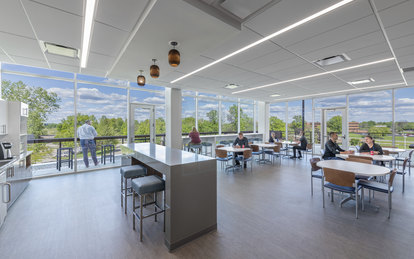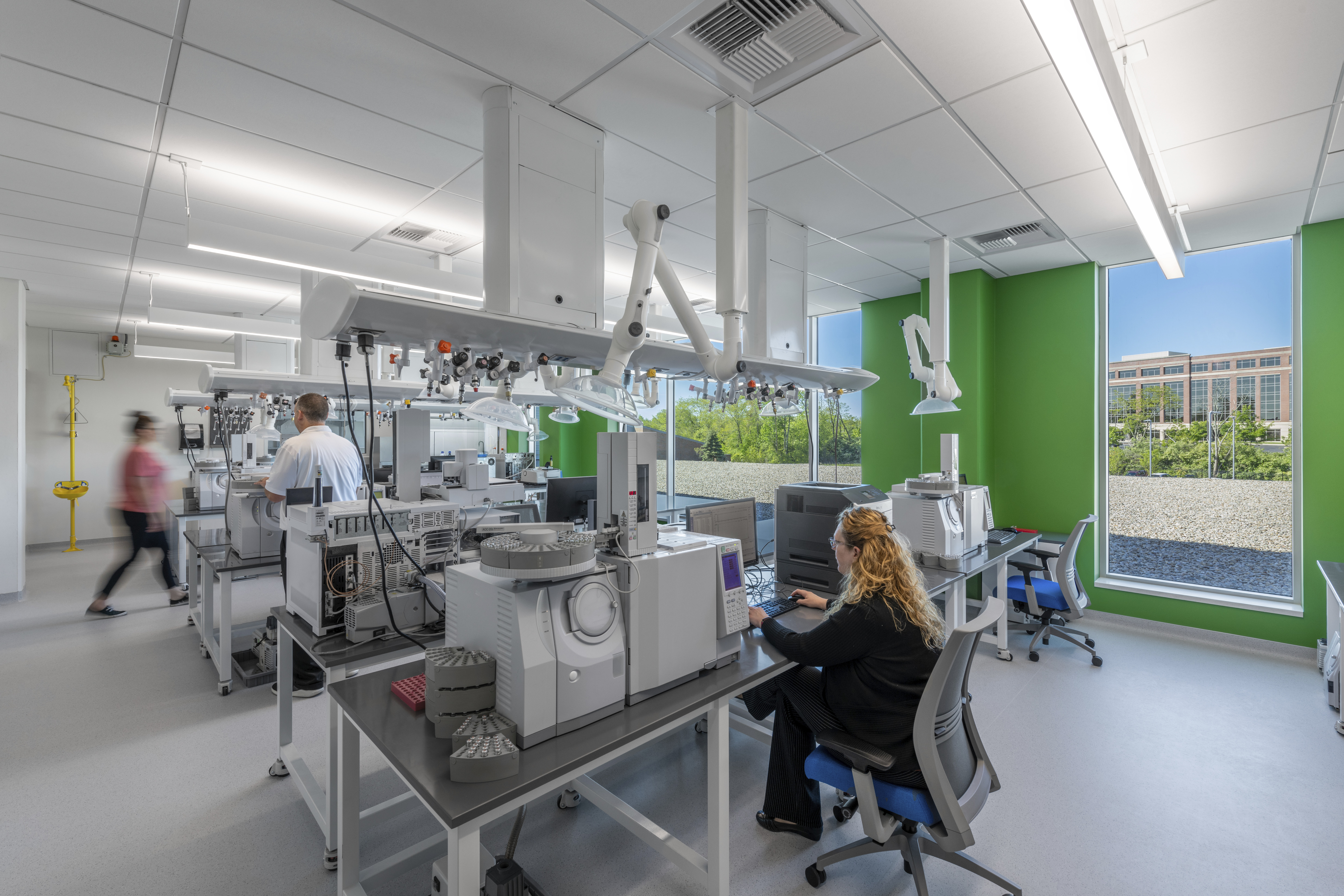Staying Informed About Forensic Science to Create Supportive Environments

The interior and exterior staff break spaces at the Hamilton County Coroner and Crime Lab ensures employees have a bright, welcoming space to informally connect with colleagues.
Last month, I had the opportunity to attend the American Society of Crime Lab Directors symposium in Boston. Nearly 400 attendees joined to take part in a conversation about how to advance forensic science. For me, as a lab planner and forensics architect, it was an opportunity to reconnect with clients and friends and immerse myself in the latest ideas that will spark innovation in my designs. Our role as designers of forensic facilities is to understand the current and future issues and trends impacting the work within the lab and the people that perform these delicate tasks.
Throughout the symposium, a resounding theme of counteracting stress and building greater connections among staff members was apparent. Presentations on advancements in forensic research, along with presentation of critical data and opportunities for improved efficiency were balanced with strategies for how to lead through challenging times.
A study published in the Journal of Forensic Sciences based on a survey of 150 practicing forensic examiners from one crime laboratory found that it was common for staff to have “elevated feelings of stress.” The study concluded, “In a broader context, the creation of working environments that can address the negative impacts of the types of stress examiners are exposed to will be valuable."1
By understanding situational and environmental stress on staff working in crime labs, our design team is better prepared to serve our clients to create supportive environments. Forensic science facilities can and should be designed to thoughtfully address physical health of staff along with the changing needs of technology. By supporting each team member with access to daylight, space for respite and a chance to connect, design can improve the physical working environment and alleviate regular stresses for staff.
Discussion topics from this symposium and other conferences provide us with information about issues that we look forward to discussing with our design colleagues and our current and future clients. With greater insight into the issues leadership and staff are grappling with, our team of forensic planners, architects and engineers are better able to find solutions at the interface of the built environment.
1. Mohammed A. Almazrouei, M.Sc., Itiel E. Dror, PhD, Ruth M. Morgan, D.Phil, “Organizational and Human Factors Affecting Forensic Decision-Making: Workplace Stress and Feedback,” Journal of Forensic Sciences, 25 August 2020. https://doi.org/10.1111/1556-4029.14542
